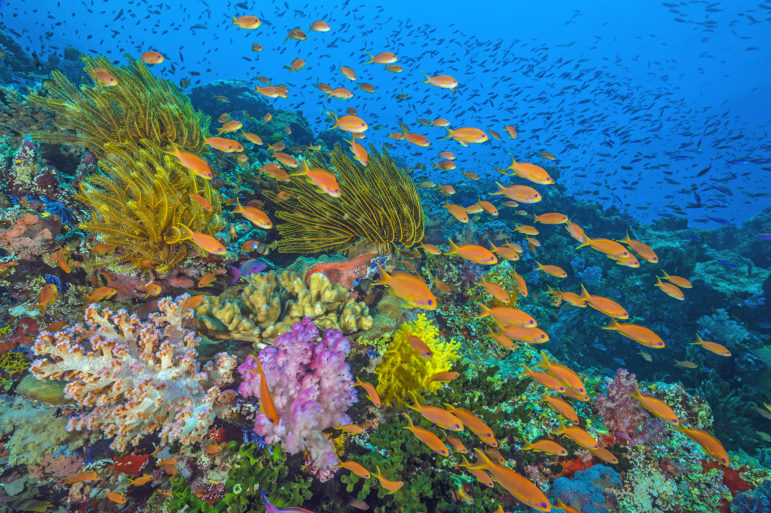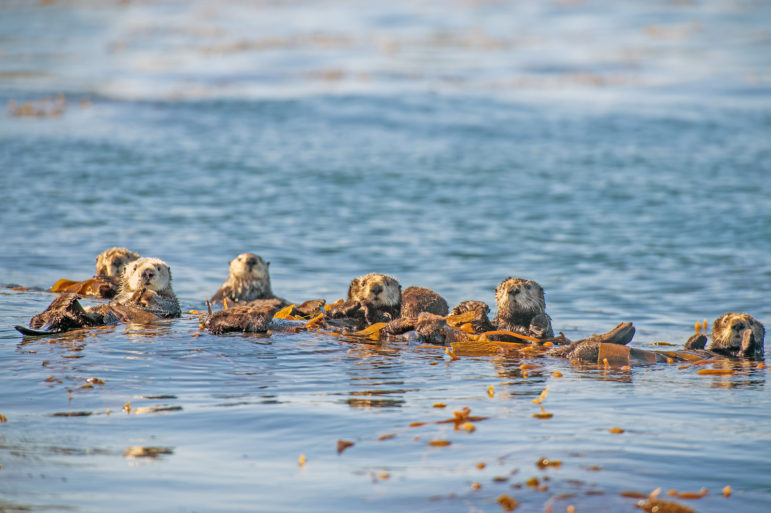The wonders and surprises of Earth’s “final frontier” are splashing across the Maritime Aquarium’s six-story IMAX Theater screen in the new movie “Oceans: Our Blue Planet.”
The film offers larger-than-life encounters with such familiar animals as dolphins, sea otters and walruses, while also introducing unusual deep-sea species like “yeti” crabs, a barrel-eye fish and dumbo octopus.
— an announcement from the Maritime Aquarium
“Oceans: Our Blue Planet” is playing at 11 a.m. and 2 and 4 p.m. daily through March 14. It’s narrated by Academy Award-winning actress Kate Winslet, and sponsored locally by the Santa Family Fund.
“We’re excited to give audiences this inspiring, beautiful exploration of the world ocean,” said Dave Sigworth, the Aquarium’s publicist. “We love how the movie blends new discoveries, while also serving as a primer for those who are new to the ocean environment and issues affecting it. And, of course, it is spectacular on our IMAX screen.”
The Maritime Aquarium has the largest IMAX Theater in Connecticut. Its giant screen and 70mm film-projection system combines the brightest, clearest images at almost 10 times the resolution of standard-projection formats with powerful, laser-aligned digital sound and customized theater geometry to create the world’s most immersive film experience.
The 41-minute movie transports audiences through ocean habitats of increasing depths, from coral reefs in warm tropical “shallows” to the surprisingly populated deep black sea. Among the encounters are those with a very cunning octopus and an ingenious tuskfish, whose use of a tool to feed was previously believed to be beyond the ability of fish.

Photo provided by the Maritime Aquarium
A bustling coral reef in Fiji. Tropical reefs are some of the busiest places in the ocean. Fish, like these Sea Goldie, spend their days foraging in schools in the clear waters above patches of coral reef.
“Even ocean creatures that we already knew were smart are continuing to surprise us,” Winslet says of a scene that has a pod of dolphins passing down knowledge to a young calf.
In kelp forests, the balance of nature plays out as sea urchins – which can ravage kelp – are kept in check by hungry urchin-eating sea otters.
And, thanks to technologies that take ocean exploration to new extremes, the film introduces audiences to such deep-sea creatures as “yeti” crabs (with “hairy white arms on which they farm bacteria to eat”) and a barreleye fish (“with a transparent head so that it can look up through its skull”).

Photo provided by Maritime Aquarium
Walrus mother and pup resting on an iceberg off of Norway’s Svalbard Archipelago in the Arctic.
“Oceans: Our Blue Planet” concludes in the Arctic to show that shrinking ice caps are creating new challenges for such animals as walruses and polar bears.
“Just as we’re beginning to understand the sophisticated lives of sea creatures, so we begin to recognize the fragility of their home,” Winslet says.
“There has never been a more crucial time to continue this journey of discovery because our future too depends on a healthy blue planet and who knows what other secrets are out there, waiting to be discovered.”

Photo provided by Maritime Aquarium
Sea otters in Monterey Bay, Ca. Sea otters must eat about 30 percent of their body weight every day but, when not hunting, they rest by floating on their backs, frequently wrapping themselves in fronds of kelp for better stability.
“Oceans: Our Blue Planet” is a collaboration between BBC Earth and OceanX Media, based during a global odyssey with researchers aboard Ocean X’s 184-foot research vessel, the M/V Alucia.
- Microsoft, a national sponsor of the film, and the BBC, are providing educational resources tailored around the messages and themes portrayed in “Oceans: Our Blue Planet.”
Other IMAX movies showing at The Maritime Aquarium this fall – and their show times, as of Oct. 5 – are “Backyard Wilderness” (12 noon, daily) and “Pandas” (1 and 3 p.m., daily).
One daytime IMAX movie is included with Maritime Aquarium admission: $24.95 for adults; $22.95 for seniors (65+); and $17.95 for children (3-12).


Pingback: Your Little Monsters Could Get in the Maritime Aquarium/AquaScarium for Free Oct 27-28 - DarieniteDarienite